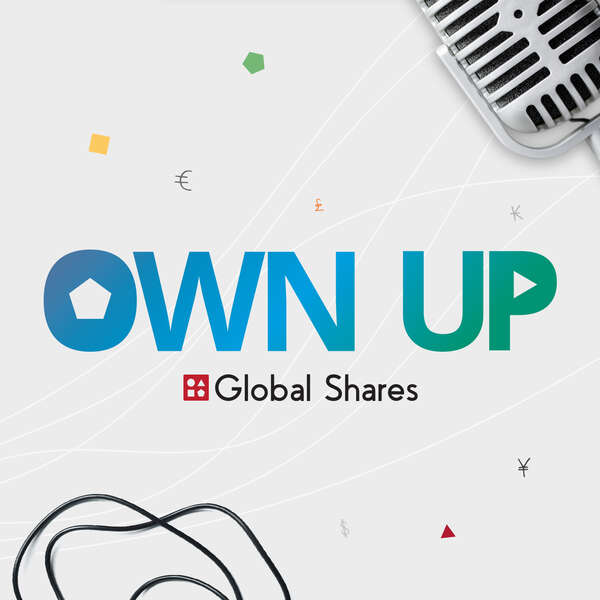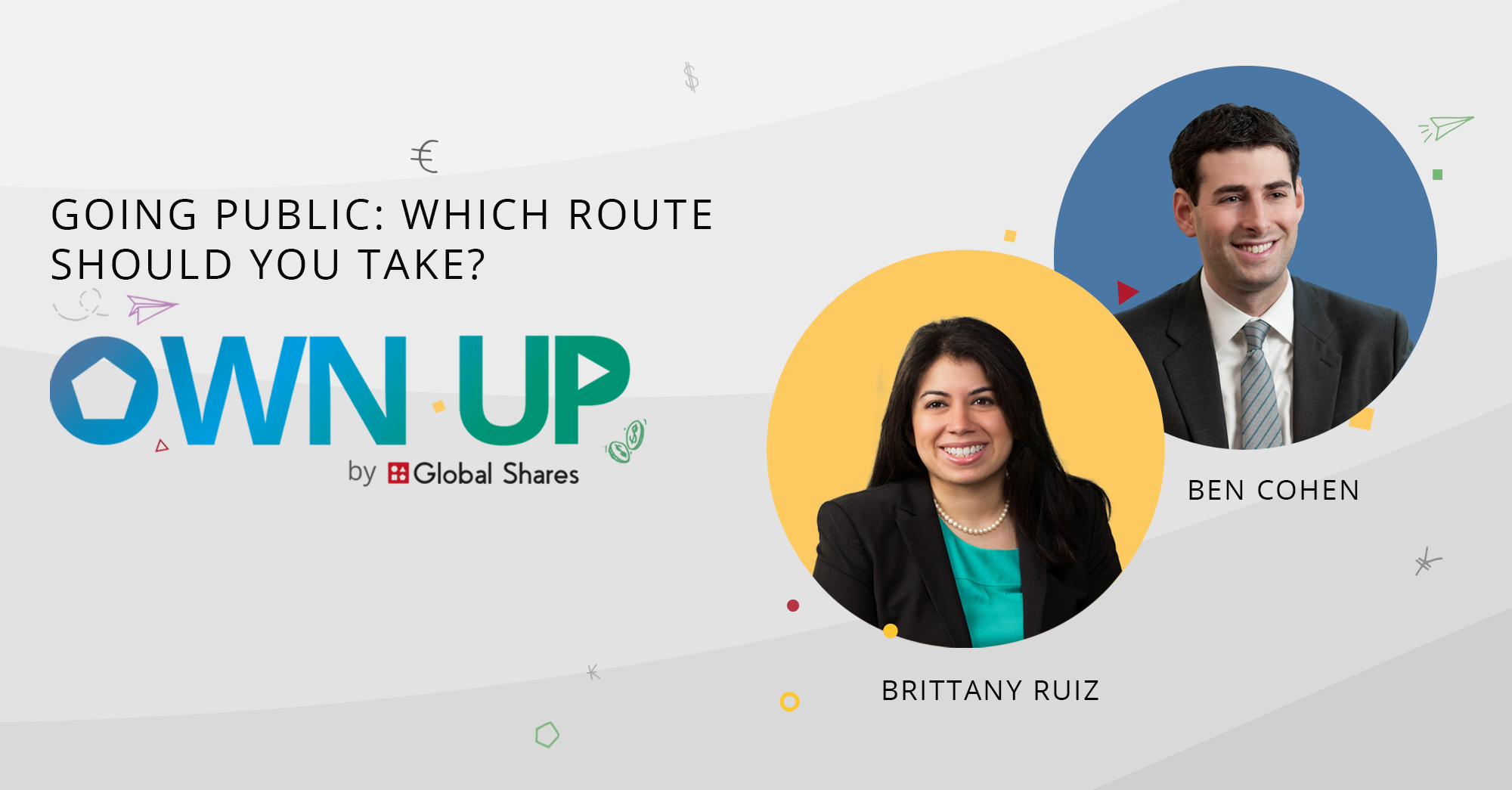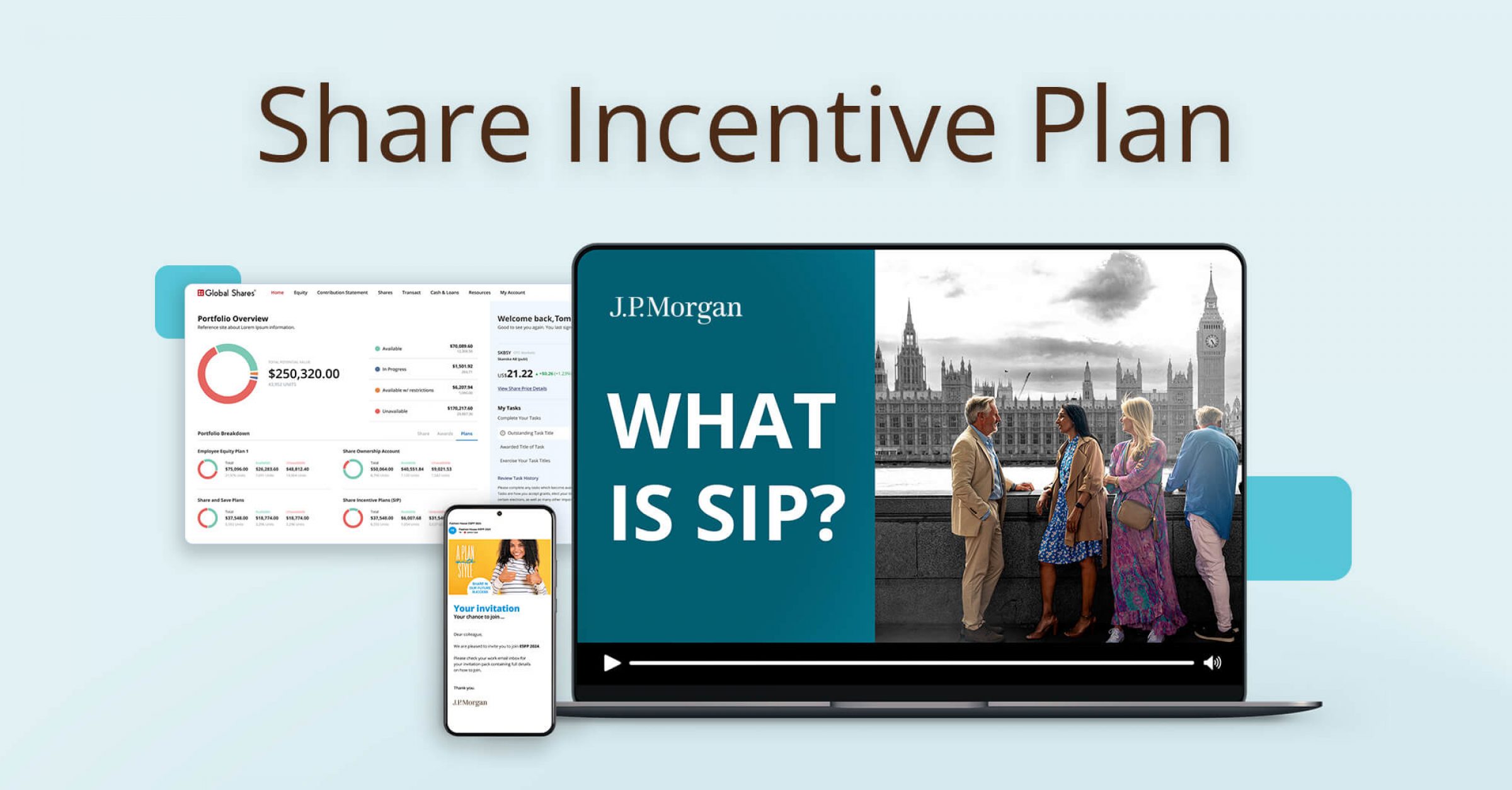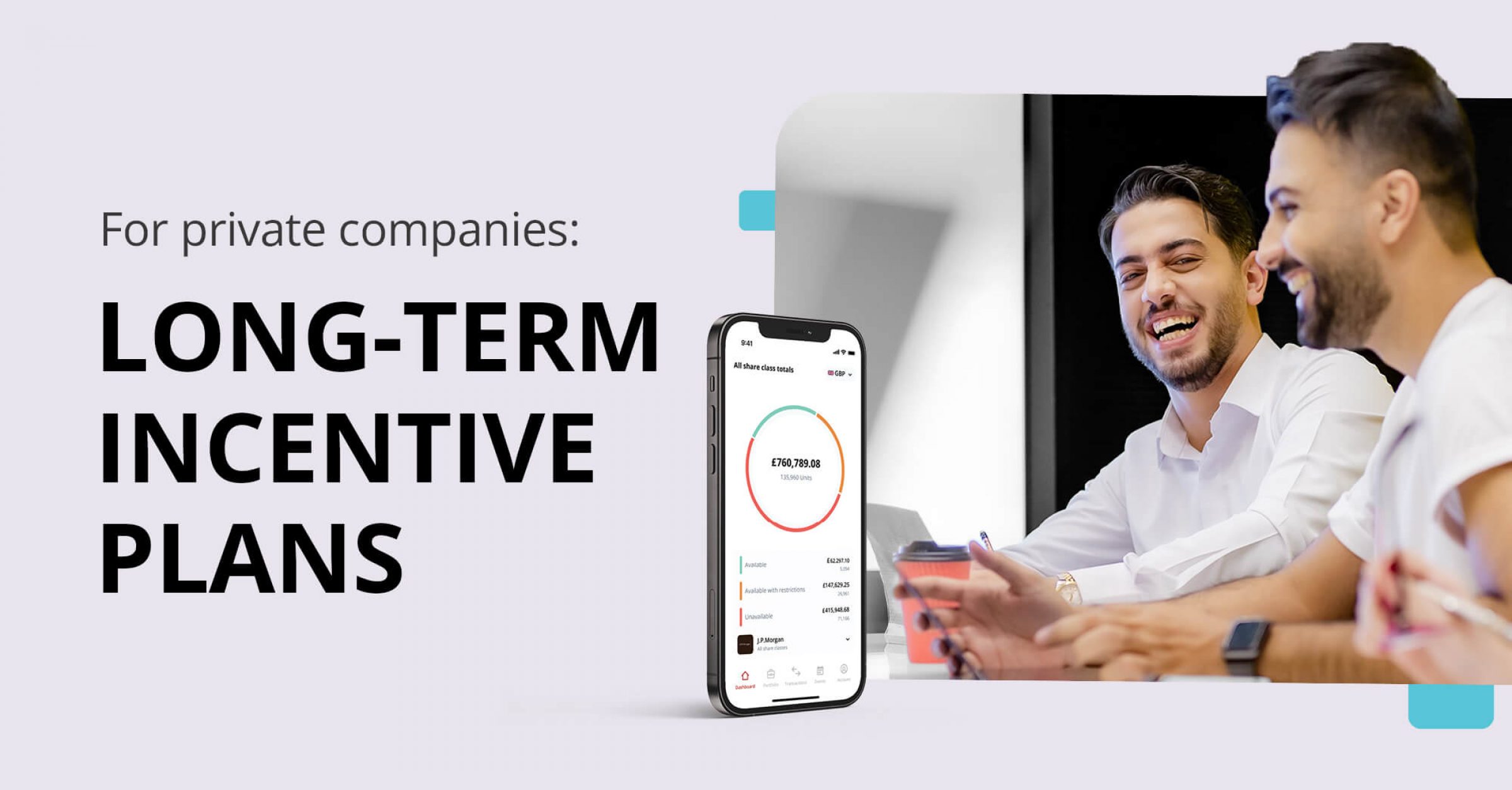Episode 6: Going Public: Going Public: IPOs, Early Employee Liquidity & More with Ben Cohen and Brittany Ruiz
Last year was a record year for IPOs. According to data from Nasdaq, there was over 1,000 new listings in 2021 alone, and an 85% increase in capital raised last year compared to 2020. Although 50% of this capital was fueled by SPACs, it was still a standout year, beating records last seen during the dot-com bubble.
These are topics that no doubt need to be tackled by experts, so to help us simplify this complex subject are Ben Cohen and Brittany Ruiz, who are both partners at Latham and Watkins.
Ben is a nationally recognised corporate lawyer who handles a broad array of high-profile and innovative capital markets, as well as other financial transactions including IPOs, direct listings and SPACs.
Brittany represents issuers and underwriters in complex, high-profile equity and debt offerings, and she handles transactions on behalf of globally recognised brands, major investment banks, and private equity firms. She also has vast experience helping companies to go public.
Topics discussed include:
- Major types of routes to going public and/or providing liquidity to employees
- Review of the growing call for early liquidity
- The pros and cons of Direct Listing
- What the ramp-up to direct listing entails
- Early lockup releases
- And some key lessons

Ep 6: Going Public: IPOs, Early Employee Liquidity & More with Ben Cohen and Brittany Ruiz
Show Transcription:
0:00:01.5 Chris Dohrmann: Hello, and welcome to Own Up, the podcast all about equity compensation and employee ownership brought to you by Global Shares. I’m your host, Chris Dohrmann, and I’m joined as ever by my friend John Bagdonas, hi John?
0:00:11.5 John Bagdonas: Hey Chris.
0:00:13.7 Chris Dohrmann: Today, we’re gonna be looking at the journey of going public. Last year was a record year for IPOs, according to data from NASDAQ, there were over a thousand new listings in 2021 alone, and a 85% increase in capital raised last year compared to 2020. Although 50% of his capital was fueled by SPACs, it was still a stand-out year, beating records Lassen during the dot com bubble, as more and more companies get ready to join the public market, we wanted to catch up with two experts to explore the many components of going public in 2022. Joining us today is Ben Cohen and Brittany Ruiz, who are both partners at Latham and Watkins.
0:00:52.2 John Bagdonas: Thanks, Chris. I’m very excited to have Ben and Brittany with us today, representing the capital markets practice of global law firm, Latham and Watkins. Ben Cohen is a partner in Latham’s New York office, and Brittany Ruiz is a partner in Latham’s New York and Los Angeles offices.
0:01:09.2 John Bagdonas: They represent public and private corporations, non-US corporations, investment banks, and private equity funds and capital markets, general securities and corporate matters. Ben and Brittany were key members of the Latham deal team that pioneered the direct listing structure in their representation of Spotify in its ground-breaking direct listing in 2018, and they have since advised on the direct listings of Warby Parker and coin base, among others. Welcome, Brittany and Ben. So let’s jump right in, start off with some of the basics for the audience on going public and early liquidity, you kick us off, Ben?
0:01:47.2 Ben Cohen: Yeah, sure, no problem. Thanks for having us today. Looking forward to the discussion. So, today, we are gonna speak on the three primary ways that companies go public, and obviously one of the main reasons companies go public is to get liquidity for employees as well as all their stakeholders. So those three primary ways are the IPO, the direct listing and the DSPAC and we’re gonna primarily focus on the IPO and the direct listing today, but also touch on the DSPAC. So, just to kick things off on the traditional IPO, given we’re focused on early liquidity I think what we’re primarily gonna tackle is the process of pricing an IPO as well as lock-ups and what that means for employees and other stakeholders as they look to liquidate their positions.
0:02:35.8 Ben Cohen: We could spend a whole hour of just talking about IPOS, but I think those two topics are gonna be the most relevant for our early liquidity discussion. So the IPO is the tried and true process, no doubt about it, it’s been around for years, whereas the direct listing and the DSPAC transactions are much newer to the markets, and IPO has four unique phases when I think about it in terms of pricing that ultimately results in your stock being listed, so the first of those phases is the company based on advice from the underwriters, arrives at a price range for the cover of the prospectors. So, this is the price that you are gonna go out to the market and say this is what we think our company is worth from a valuation perspective.
0:03:20.4 Ben Cohen: It’s gonna be based off of fulsome discussions with the investment banks, with their analysts, with investors through what’s called testing the waters meetings, where you meet with investors before a formal roadshow to discuss the company and valuation, as well as a very detailed model that you’re gonna go through with the analyst. You are then in the second phase of pricing an IPO, gonna test that price range of what we call the roadshow, that’s when you go on about a 10-day process with the investment banks, you meet with a bunch of institutional investors, you build a book of demand, on the roadshow your price range can get adjusted, and what I would say is, it’s worth noting that as you’re building this book of demand, while price discovery is helpful, it’s constrained by supply and demand, so only a certain number of shares are actually offered in the IPO, usually 10% of the company or so, and demand is constrained by the investors you’re meeting with largely the institutional investors that put orders in the book.
0:04:24.9 Ben Cohen: So during the roadshow, your price range can be adjusted up or down based on these meetings, and that culminates in the third phase, which is that the actual pricing event, that’s where the underwriters formally present the price to you, you price your IPO. And lastly, the last phase of IPO pricing is when your stock actually gets listed on the next day after pricing, so you price your IPO, usually that happens around 5:00 5:30 Eastern in an evening, then the next morning, you’re listed on New York Stock Exchange or NASDAQ, giving constraints in supply and demand that we just spoke about there can be a lot of unpredictability on where the stock will actually open and how we’ll trade, particularly given the limited supply in the market. So the second thing I’ll talk about, now that we just sort of talked about how you price an IPO is typically IPOs don’t offer liquidity to existing shareholders, and why is that? Most of the time, IPOs are primarily a capital raising event for the company, so existing shareholders don’t get liquidity in the IPO, and even when there is a secondary component, oftentimes it’s primarily made up with larger existing shareholders rather than sort of the rank and file employee.
0:05:38.6 Ben Cohen: Secondly, why an IPO is in a liquidity event, underwriters require 100-day lock-up from all shareholders, including employees, this is really to give the stocks and runway some stability, so that there is sort of constrained apply, so that the sort of stock can trade in a more normal pattern, sometimes this has the inverse effect, you have low liquidity in an IPO, it can create volatility in your stock. So that’s generally the IPO product from a pricing and liquidity perspective, again, not a perfect pricing event for a company, not a great liquidity event for your employees. Moving on to the direct listing, this product was created about five years ago with the Spotify direct listing. It’s still relatively new compared to the IPO product. But in the last handful of years, the technology has evolved to a place where there’s more or less, it’s a well-understood path among the key participants in the market, the SEC and the exchanges, investment banks and investors, there’s been over 10 direct listings to date, and last year was a real banner year for direct listings, we saw a ton of them last year.
0:06:45.0 Ben Cohen: Fundamentally, what is a direct listing? It’s a listing of shares on an exchange without raising capital, there are no underwriters involved in the process, but the banks do hire financial advisors to help advise the company on disclosure and marketing strategy, the pricing in a direct listing is fundamentally different from an IPO. In a direct listing, the goal is to create unfettered supply and demand.
0:07:07.7 Ben Cohen: So what does that mean? It means that you’re basically registering all existing shareholders shares or you’re finding an exemption for them to sell from registration, so effectively there’s unfettered supply, anyone can sell and anyone in the market can put in an order in that opening trade and buy. It’s true market-driven price discovery. This is obviously extremely different than the four phases of IPO pricing that we just talked about, when you really think about what a direct listing is compared to an IPO, you’re eliminating those first three phases, so instead of going through this dog and pony show with the investment bank, the range, the pricing, all that stuff that we just talked about, you skip right to that last step where the exchange opens your stock like they open any other stock on any given day in a modified Dutch auction type process.
0:08:00.9 Ben Cohen: This is also the same process in terms of how they open your stock after an IPO, given your stock has no trading history, this typically takes a couple of hours to figure out Where supply and demand meet, that’s similar to an IPO, though it might take a little bit longer in the case of a direct listing, but what I would say is the biggest benefit to direct listing is there’s no lock-ups, so as I just mentioned, all your employees will be able to get liquidity on day one, if they choose to do so, we’ll get a bit more into the pros and cons of a direct listing in a bit, but just to move on to the third product SPACs.
0:08:37.1 Ben Cohen: So what does that stand for? It’s a Special Purpose Acquisition Company, it’s effectively a shell company formed by a sponsor group for the sole purpose of acquiring a company to take it public. We really do not have enough time today to do a deep dive into SPACs and I wanna make sure we can hit a bunch of other important topics, but I will note that one of the bigger advantages of a SPAC is that there is no market risk and price uncertainty like you have in an IPO or even a direct listing, it’s a pre-negotiated process ’cause it’s effectively an M&A deal, so there’s a pre-negotiated price between the SPAC and the target company, so there is price certainty in the SPAC market, however, the SPAC is usually not a great liquidity event for employees, and often there will be a lock-up for existing stakeholders. I would also say that in this market today, SPAC have really cooled off from where they were a year ago, and that’s largely due to the performance of SPACs in the last year and the unwillingness of institutional investors to invest in pipes, which are key components of the SPACs structure to provide additional liquidity to the target company, but again, at a high level, SPACs like IPOs are not an amazing liquidity event for your employees, it’s sort of something that will come a little bit later in the process.
0:09:50.1 Ben Cohen: Hopefully, that gives folks a bit of background as we dive deeper into these topics, and maybe what I would say generally is the IPO process and sort of the faults that it had, particularly in it not being a great pricing event, and it not being a great liquidity event for your employees was one of the reasons the direct listing was created, as companies have been staying private for a lot longer these days, and I think everybody knows that they’ve been… The private markets are much more robust, there’s a lot of capital, the field growth for these high growth companies and they’ve been private longer, but that’s also really driven the need for the growing call for early liquidity. And so maybe with that, I’ll hand it over to Brittany to give us a little bit, just general color on that sort of growing call for early liquidity and how that’s been playing out in the markets recently.
0:10:45.1 Brittany Ruiz: Thanks, Ben. Yes, as Ben’s noted, we have seen companies really focus on providing early liquidity for their employees, and that was a huge reason why, for example, Spotify did the first direct listing was they wanted to give their employees an opportunity to participate in that typical price pop, that happens when you go public, and since the direct listings, we’ve now seen in IPOs, more innovative lock-up structures that enable liquidity for employees earlier than they might normally be able to do so, and we’ve seen this in part because the demand for labor is so much higher and the competitiveness to get good labor is so much higher that you wanna be able to provide good compensation for your employees and rewarding them with stock is one way to do that, but you need to give your employees a way to sell that stock in order to make money.
0:11:37.0 Brittany Ruiz: And as Ben noted, companies are staying private longer, and the longer they stay private, the more difficult it is for employees to sell their shares to get early liquidity, and so that is one of the reasons why you’ve seen different ways for people to go public, like direct listings, and you’ve seen innovative lock-up structures, it’s to address that growing call for early liquidity, some of the cons of providing early liquidity, there sometimes can be a desire to lock in employees, you want them to have more equity in the company so that their incentives are aligned with the performance of the company in the long-term, another con of early liquidity is orderly sell down in market post-listing, which could impact the stock price in a potentially negative fashion, and so that’s another con of providing early liquidity so you really need to be thoughtful about when you provide that early liquidity, for example, an IPO context and how you do it.
0:12:40.6 John Bagdonas: Thanks for the very comprehensive overview both of you on the capital market path that companies take as well as the background on the calls for early liquidity. But going back to maybe doing a little bit of a deeper dive on direct listings, what are some of the pros and cons of direct listings, and I guess Ben we’ll start with you.
0:13:00.4 Ben Cohen: Sure, so there are definitely pros and cons to this product, it is a relatively new product, so it is still evolving in the market, but as we discussed earlier, I think the biggest benefit of a direct listing is clearly early liquidity for your employees. And just to take a step back, one of the other… This is just more of a tangent, but one of the other market trends we’ve seen recently is the growing need for employee tender offers in the contexts of a private company, you’ll see a lot of companies who are doing sort of employee tender offers in connection with around or shortly after around to give employees liquidity, because IPOs are such an uncertain event, it’s so hard to access those markets, you really need to wait for a precise windows when not only you’re not…
0:13:47.8 Ben Cohen: You have your earnings, you have your financial information, but the markets are also cooperating and we’re seeing that today, the markets have been extremely volatile to kick off 2022, IPO activity is way down since the record… The record setting year we saw in 2021, but one of the reasons why folks really like the direct listing product is, unlike IPOs, you can’t get early liquidity for your employees and you’re less sensitive to those market demands because the company isn’t trying to raise capital, you’re not doing an underwriting offering you’re just listing your stock on an exchange, the second big advantage, I think of a direct listing, when I think about it is the pure market-driven price discovery that we talked about earlier. There is no book building, there is no limits on supply and demand, I think as an added benefit to that pricing model is your existing investors get the benefit of a pop in the stock.
0:14:43.9 Ben Cohen: So last year, I think a little bit less so, and we saw a lot of these IPOs sort of trade down over time, but in prior years, particularly for a lot of the tech names, you saw these massive pops in day one trading and the folks who are trading in the opening trade are effectively folks that just purchased your stock 12 hours ago from the underwriters, it’s not your existing investors, and that’s fundamentally different in a direct listing, in a direct listing, the folks that are participating in that opening trading get the advantage of that valuation or your existing investors and your employees.
0:15:15.8 Ben Cohen: Also a direct listing, I think is viewed as a more transparent event from the market perspective, you’re not… You’re giving equal access to retail investors as well as institutional investors to your model, you’ll hold an Investor Day where that would broadcast to the world that you could really give a deep dive on your business and how you think about your business and the trends and the key performance indicators, additionally, you’ll put out guidance to the market in an AK right before you list. So that process is a lot more transparent than the roadshow process, for example, we talked about in the IPO earlier, where you’re only meeting with certain institutional investors, and again, that’s just because of the constraints, you have a 10-day process to build a book and management only has so much time. Lastly, a direct listing is not a dilutive event to existing shareholders, so one thing you’ll commonly see in IPOs is companies basically raising liquidity ’cause they have to. It’s just the price to going public, these companies are high growth companies, but a lot of times they have a lot of cash on their balance sheet, and they don’t necessarily have an immediate need for that liquidity, so it’s dilutive to stockholders at a time when maybe it doesn’t need to be dilutive to stockholders. In a direct listing, there is no need for the company to issue primary shares because the supply is gonna come from your existing investors.
6:35.7 Ben Cohen: So on the flip side of that coin, just in terms of some of the cons, we’ve heard on direct listings and why companies may not choose to do it, and again, direct listings are a more niche product, they are not right for every company. In fact, they’re probably not right for the majority of companies, but on the flip side, it is in a capital raising event, so some companies need capital, whether it’s to pay that debt, M&A, invest in the growth of the business. They need capital and they want do an IPO ’cause they want those funds, but I wanna just stop on that for a second, because I wanted to stress that it’s not an immediate need for capital, so a direct listing, companies that have done direct listings have still raise capital, either shortly before or shortly after the direct listing, so for example, Squarespace and Roblox did private rounds right before their direct listings, I’m talking within a couple of months, and Coinbase did a convertible notes offering right after their direct listing again within a quarter of their direct listing, and both exchanges have actually now influenced rules that will allow companies to raise capital with directly listing although this has not been something that’s been tested in the market today, but all that to say is that it’s just not an immediate source of capital for a company.
0:17:47.9 Ben Cohen: But there are still ways for direct listing companies to raise capital, whether it’s pre-IPO or post-IPO. The second, I think, biggest weakness of a direct listing and why it doesn’t work for a lot of companies is you need to meet the NASDAQ in New York Stock Exchange Round lot shareholder requirements, which is 300 and 400 respectively. Most people don’t have… A lot of companies just don’t even have 300 and 400 shareholders including employees in their cap stack, so if you don’t have that, you can’t do a direct listing, or if you have two concentrated of a cap stack, for example, maybe you have two or three shareholders that own 90% of your company and they’re not interested in trading, so if that’s the case and there is no supply on day one, and the direct listing is probably not right for your company.
0:18:30.0 Ben Cohen: Also, as I mentioned before, there are investment banks to help manage the process in an IPO, they’re really there to hold your hand, to exist on the roadshow to build that book of demand, they’re your true partners in a direct listing, they’re still there for you and they will be there to support you and do everything they can, but there are certain SEC constraints in terms of what they can do, ’cause they’re not underwriters in a direct listing, so they can’t help you on meeting with investors, they can’t have any interaction with investors whatsoever actually, so they can help you advising on drafting your registration statement on the content of investor presentations, but they can’t do a lot of other things that they typically could do in an IPO that puts more stress on management, and not every management team is gonna have enough resources to be able to handle the demands of the direct listing.
0:19:21.0 Ben Cohen: A couple of other points I would just say are, some people see the fact that there’s no book-building process as a deterrent, they wanna know what institutional investors are gonna come in and be part of their story going forward and are gonna invest in their stock. You have no control over who’s gonna buy your stock in a direct listing whereas you do in an IPO. I would also mention that there’s no research analyst model in the IPO, and while some people like the fact that direct listings are more transparent, it does hurt your sort of business model, in some sense, if you don’t have a business model that’s easy to understand, or you maybe have a business that’s hard to forecast, not being able to provide a model to research analysts can potentially be problematic for you. It may just mean that it takes the market a couple of extra quarters to get used to your business and how you report, and I think as we’re gonna get into later, one of the big deterrent of direct listing is setting up trading on day one is extremely complicated. So that again is just sort of a management research question. And maybe a one more point, I’ll just say, as Brittany just noted, it also does give employees a significant liquidity event.
0:20:40.4 Ben Cohen: This may not be a big issue for companies if employees still have significant slugs of invested equity, but for some companies that can’t be a concern if you’re gonna see a rush to sell and then potentially some attrition in your share holder in your sorry your employee base.
0:20:55.9 John Bagdonas: And I just wanted to jump in here because I wanted to thank you both for doing something that I had some reservations about because I didn’t think that you’d be able to go over the basics well enough with some of our listeners, and I think you’ve done a tremendous job. So if I could just recap for some of the folks so far, we’ve talked about the differences between a traditional IPO, and a direct listing, and the differences between what are liquidity events and what are not. We’ve also talked about the fact that there are a number of different things in the market today that are coming together that have not come together before. So for example, there’s a significant labour incentive for people to get early liquidity because companies are staying private longer, not like in the days of dot-com boom where people were private for a very short time in listing, and now they are doing several rounds before they go into this, and people have been employed at start-ups for quite a long time awaiting liquidity events.
0:21:55.5 John Bagdonas: So we were talking about how to address those with a direct listing as opposed to some of the others that have lock-ups. So I wanna just come back now and just say… So part of this, you’ve talked about what the pros and cons are, what the process is, how does one ramp-up because they will not have the partners you talked about that usually shepherd you through this process, like an underwriter, so how does one ramp up to a direct listing?
0:22:21.9 Brittany Ruiz: Good question. And for that, you’ll need to hire good counsel to help direct you through the process, like Latham and Watkins. But the preparation for direct listing in some respects looks a lot like an IPO. First, you prepare your registration statement and you go through the normal SEC review process of that registration statement. Similar to an IPO, you’ll craft a box in a business section which will tell the story of the company. You’ll have to prepare PCAOB audited historical financial statements and interim financial statements in an MD&A, you’ll have robust risk factor disclosure highlighting the risk to your business and the offering, among other key sections.
0:23:01.6 Brittany Ruiz: So that all looks and feels a lot like an IPO. In a direct listing however, you will have some key differences in your disclosure, for example, the registration statement will look more like a resell registration statement, so it will say you’re registering a certain number of shares which may or may not be resold, you will have risk factors related to the direct listing itself, and this is something the SEC has really focused on in their comment letters, highlighting to investors that this is a novel process, while it’s obviously gaining steam and a lot of companies are choosing this way to go public relative to the number of IPOS that have done historically, this is still somewhat new. And you’ll need to explain to investors your risk factors that there is no book-building process, it’s not an IPO, etcetera, etcetera.
0:23:51.8 Brittany Ruiz: Your beneficial ownership table will look different than it will in a registration statement for an IPO, since your beneficial ownership table will be you registering shares which may or may not be sold in the offering. So likely you will be registering all shares that can’t be sold under Rule 144. You will have a plan of distribution, which outlines how shares can be sold, names, your financial advisor and describes the listing process for the stock exchange that you select. And finally, you won’t be providing a price range, which Ben talked about earlier, like you would in an IPO, but rather, you will detail the historical sale price of the shares. You will submit your registration statement to the SEC to be reviewed by the SEC, just like in any IPO, and you’ll go through several rounds of comments with the SEC, just like you would in an IPO, but in a direct listing because of its relative novelty, you may get a little more scrutiny from the SEC.
0:24:47.8 Brittany Ruiz: For investor education, what does that look like compared to an IPO? So unlike in an IPO, there is no bank involvement in communicating with investors in a direct listing, instead the banks act like consultants and they advise on the content of the investor presentation, among other administrative tasks that they may help with. However, the company itself can still engage in investor education, they can do testing the waters meetings, they can do roadshow type meetings, and many companies choose to do so, and Spotify, the inaugural direct listing, the company chose to do an Investor Day where they invited anyone and everyone to come to one location and hear about the company directly from members of management, and that has been a feature of many direct listings that have been done since Spotify in addition to doing the more one-on-one investor education at meetings. And during these investor education meetings, the company can discuss similar to in an IPO, the business, tell the story, talk about the financial condition of the business and results of operations, but they can’t engage in any kind of price talk with investors.
0:25:58.0 Brittany Ruiz: The biggest difference in a direct listing versus an IPO is getting ready for day one training, you can’t… The SEC has told us that you can’t have coordination. I.e. You can’t plan out in advance who is going to sell and who will not sell and how much they will sell. So the SEC has said that that looks a little bit like book-building in an IPO, which is the process that Ben talked about earlier, whereby the banks and the company decide who will be able to buy the shares offered in an IPO. But there’s lots of administrative work in getting ready for day one trading. It is critical in a direct listing that you enable supply on the first day of trading that you would administratively enable supply on the first day of day of trading, so the company will need to help shareholders get their shares to brokerage accounts in advance at the first day of trading.
0:26:47.6 Brittany Ruiz: In order to do this, you will need to have a detailed and thoughtful employee and shareholder communications, you need to mechanically sort out the process for getting shares to brokerage accounts, your employee stock plan administrator will be critical for helping your employees sell on day one. So you will want to be sure to set up your Global Shares platform early on and work closely with their team to figure out the mechanics for trading and to convey that information clearly to investors and in a timely manner. For many people, they have never gone through a process of taking a share from a registrar and moving it to a brokerage account. Many people, especially employees, may not even have a brokerage account, may not understand what Global Shares does and how they can help enable trading. And so this is a very new process for a lot of shareholders, so that educational component will be critical and partnering with Global Shares early and making sure that you work together on building out these communications so that people are able to sell on day one, should they choose to is a critical step in this process, and should be started early.
0:28:09.3 John Bagdonas: I was gonna just say thanks for the plug for Global Shares or just stock plan administration in general, but I think you’ve definitely convinced me and probably many in our audience about the overwhelming benefits for the right company and the right situation for a direct listing, but interestingly enough, I think they’re, at least from an outsider’s perspective, there have been some amount of reaction, if you will, more from a design standpoint than anything else in the traditional IPO markets because of direct listings and notwithstanding the fact that the point that Ben made earlier about how the capital markets are reacting now to inflationary pressures and everything else, that it’s making traditional IPOS much more complicated or maybe less attractive nowadays. I think the one thing that has taken place, again, from an outsider’s perspective, is some of the things from early lock-up releases and that have… Those have made their way into some more traditional listings and maybe particularly from an employee standpoint, and then… I was gonna say, maybe Ben, you could just talk a little bit about that from your perspective.
0:29:17.3 Ben Cohen: Yeah, for sure, it’s a really good point, and it’s sort of been the next step in the evolution of this early liquidity process, I think. Just to recap for people, the way I think about this evolution, it’s companies have stayed private longer. SEC rules and more robust private markets ability to raise capital easier for growth, resulted in companies staying private longer. That in turn was putting pressure on companies to give liquidity to their shareholder base, a lot of their employees in particular are compensated with equity, and these are people that need to pay rent, and that in turn was one of the reasons direct listings gained popularity because it’s sort of a great early liquidity event coupled with market-driven price discovery, and from there, we also saw a lot more in terms of employee tender offers, some other tools for companies that maybe were considering the IPO, right.
0:30:17.1 Ben Cohen: ‘Cause as I said earlier, while direct listings are great, it’s certainly more of a niche product, it’s not gonna be the product that most companies will use to go public. That’s why sort of the employee tender offer route was getting some popularity. And we’ve seen a lot more of that in the last couple of years. The next iteration is really the early lock-up release, I think companies that have chosen the IPO route are of questioning, “Well, look, in a direct listing, there hasn’t been the crazy volatility and trading that people thought, maybe it’s not such a bad thing to give some more supply to the market.” One of the big criticisms of IPOS as companies a lot of times wanna do the smallest IPO they can, because it’s not exactly the most efficient way to raise capital.
0:31:04.3 Ben Cohen: If your IPO is successful, you expect your stock to pop 20-30%, so a lot of times, folks try to get in with a small IPO and that results in volatile trading, ’cause there isn’t a lot of supply out in the market. So when you think about early lock-up releases, they can really be a very attractive vehicle, and it’s something that has really gained traction in the last year, I would say, and the market is rapidly evolving as it relates to these products, but just to give you a flavour for them in terms of what we’re actually talking about here. So in the traditional IPO, you had a 108-day lock-up, and that was pretty much the norm until about two years ago, and now in the last two years, and really in the last year, we’ve seen these early releases, one example of it, one flavour of it, is basically letting employees sell vested or vested RSUs and options or long shares on day one. Usually, it’s a certain percentage of it. So it’s not all of their shares, but call it 25%. This is, as I was just saying, kind of a win-win as it gives employees liquidity, so it’s solving your employee liquidity issue, it’s also providing a bit more float for the stock to sort of solve that issue of, it could be a more thinly traded stock, if you’re doing a smallish IPO.
0:32:22.4 Ben Cohen: Usually the employee block is not so big that the trades will meaningfully disrupt the trading of the stock. So again, it can really be a win-win from a lot of different angles in addition to the day one releases, underwriters are also open these days to early releases of all your other stakeholders, usually that’s based on stock performance. So an example of this would be if your stock, it appreciates 30%-35% from the IPO price after your first, in earnings release, post IPO, then you can release a certain slug of everyone else’s stock, whether that’s 25%, 30%, but there’ll be another sort of what we’ll call an early lock-up release, if those performance thresholds are met. This can be exciting for companies and employees, there are performance thresholds, and in many cases, these hurdles are not met, it’s just sort of a word of warning to the market that while it could be a great thing, it’s not certain. And one thing we have seen is people pushing to not have those hurdles for employees, for the exact reason we’ve been talking about, they want their employees to have liquidity and they don’t want it to be based on stock performance, so maybe you put that sort of price-performance hurdle on all your other stakeholders, but not on your employee base.
0:33:42.2 Ben Cohen: One other thing on the employee… Oh sorry, at these early lock-up releases that I would sort of note is that affiliates can’t sell in the first 90 days because of securities lies so the early lock-up releases is not necessarily a liquidity event for your directors officers and your 10% plus shareholders. I don’t wanna get too geeky on securities lies on this podcast, but for those familiar with the rules, the way in which people sell into the market in these early releases, it’s an exemption from registration called Rule 144. Rule 144 is not available to affiliates in the first 90 days, which is why there’s a problem for affiliates to sell, that doesn’t mean that they couldn’t sell in the IPO, but they just can’t sell in those early release windows, at least in that first 90-day period. Lastly, I just, I’ll put the Surgeon General’s warning because if you do an early lock-up release, it comes with all of the pain that Brittany just described in terms of getting the prep work done for a direct listing, you need to get all of that admin work up and running on day one.
0:34:48.1 Ben Cohen: Whereas in a typical IPO where you have 180-day lock-up release, you have 180 days to do all that work. Here that needs to be on day one, so if you’re a company that wants to explore an early lock-up release with your underwriters, I would suggest talking about it at the org meeting. Because it is that much work that you’re gonna wanna kick off that workstream almost on day one. So that’s just a general flavour of sort of the early lock-up releases, I think it’s the latest iteration in ways to get liquidity to your employees, following on the hills of the direct listing, the employee tender offers, and I suspect, just to go on a tangent for a second, but I suspect maybe the next iteration of this will be a direct listing with a primary. I alluded to this earlier, but both exchanges have past rules that will allow a company to actually raise primary capital in connection with a direct listing. It’s a bit outside of the scope of this podcast, just ’cause the rules have been passed, but it hasn’t been tested yet, but if I’m a betting man, I would say that if we’re looking at the next flavor that the market’s gonna see, that’s probably where it’s gonna go.
0:35:58.6 John Bagdonas: I was just gonna say, it sounds like something that we can take a look at, monitor and probably revisit in the future. But I just wanted to thank you both, I think you’ve done a great job detailing what companies may have to do when they’re walking the line between raising capital or addressing some of the current trends in the market, which is volatility, so they may be delaying again, the IPO event or the liquidity event, and also addressing the dire needs some industries have more than others in addressing early liquidity for their employees.
0:36:32.8 John Bagdonas: If you had the ability to revisit some conversations you’ve had over the past year or two, and there were some things that you wish some of your clients knew earlier on based on lessons learned, what are some of the points that you could give people as far as a proactive advice now?
0:36:53.0 Brittany Ruiz: Ben, and I could probably write a book on this, but we’ll try to summarise it with a few key takeaways. One is, whether you’re doing an IPO or a direct listing, be proactive in hiring Global Shares to manage your employee stock plan. Starting that process at the outset of your offering, which I think Ben mentioned earlier, will ensure that you can smooth out any wrinkles early on and there will be wrinkles because it’s a complicated process and will ensure that your employees have a positive experience from this.
0:37:23.3 Brittany Ruiz: The second thing I would say is communication, communication, communication. Provide clear communications to employees and a dedicated resources for answering questions. For many employees and shareholders, this will be a new process, figuring out how to trade their shares on day one from a company that was previously private. Ensure you have a team of people that are available to answer questions from your employees and other shareholders. That team should be comprised of resources within the company, as well as outside counsel, as well as Global Shares. Having those people work together and setting up maybe a dedicated email address or some sort of resource where if people have questions, they can get the answer quickly, that will ensure that everybody that’s in your shareholder base will have a really positive experience.
0:38:11.4 Brittany Ruiz: Draft… Consider drafting an FAQ and providing live trainings as well as clear written communications on process and timing. For early liquidity and IPO has been mentioned earlier, be cognisant that affiliates will not be able to sell right away under Rule 144. In a direct listing, you can register affiliate shares, which enables them to sell. In an IPO, while you could potentially register their shares to be sold in the offering itself as part of the IPO, if they wanna sell their shares pursuant to an early lock-up release at any time during the 90 days after the IPO, the shares can’t be sold under Rule 144, which is that exemption from registration that Ben mentioned. So just be mindful of that as you’re working with your counsel to come up with an early lock-up release, be mindful of those rules so that you can create an early lock-up release that permits your affiliates to trade when they’re legally allowed to do so.
0:39:10.6 John Bagdonas: Brittany and Ben, thank you very much for your time, I really appreciate you’ve taken what I thought was gonna be a very complex topic and made it understandable for our listeners. Thank you.
0:39:21.5 Brittany Ruiz: Thanks for having us.
0:39:23.1 John Bagdonas: Appreciate it.
0:39:23.1 Chris Dohrmann: Thanks for listening to Own Up by Global Shares. This podcast was brought to you by Global Shares in association with DustPod. Make sure to subscribe to be notified right away when we release new episodes, and if you like what we’re doing, why not share with friends or leave a review. Until next time…
Please Note: This publication contains general information only and Global Shares is not, through this article, issuing any advice, be it legal, financial, tax-related, business-related, professional or other. The Global Shares Academy is not a substitute for professional advice and should not be used as such. Global Shares does not assume any liability for reliance on the information provided herein.








